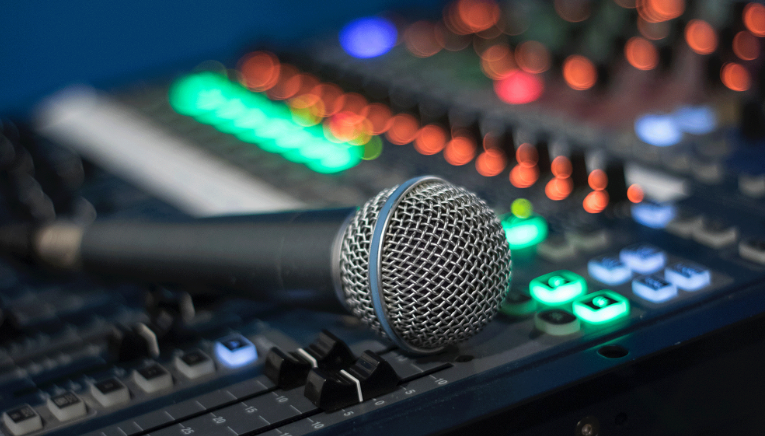
Introduction to Studio Audio
Recording music or any audio in a studio isn’t just about hitting the record button. It’s an art, a craft that requires knowledge, patience, and a keen ear.
Basics of Studio Sound
Sound in a studio is captured through microphones, processed, and then played back. This cycle, when optimized, creates recordings that are true to the source and are of high quality.
Importance of Quality Audio
Good audio can make or break your recording. With clear sound, listeners can connect better with the content, be it music, podcasts, or any other medium.
Setting Up Your Studio
The foundation of good audio lies in a well-set studio.
Choosing the Right Space
A quiet room, devoid of external noises and with minimal echoes, is ideal. It could be a basement, a spare room, or even a modified closet.
Acoustic Treatment
Add bass traps, diffusers, and acoustic panels to minimize sound reflections. This step ensures that what you record is what you get, without distortions.
Essential Audio Equipment
Here’s the gear you shouldn’t skimp on:
Microphones
From condenser to dynamic mics, your choice will depend on what you’re recording. Each has its unique characteristics suited for specific tasks.
Audio Interfaces
These devices bridge the gap between your microphone and computer. They convert analog signals to digital, ensuring the sound remains crisp.
Monitoring Systems
Using studio monitors or specialized headphones can help you listen to the pure, uncolored sound, aiding in better mixing and mastering.
Audio Recording Techniques
Getting the best sound isn’t just about having the best gear. Techniques matter too!
Microphone Placement
Positioning the microphone correctly can capture the essence of the sound. Whether it’s a vocalist’s timbre or the resonance of an acoustic guitar, placement is crucial.
Soundproofing Tips
Using isolation shields or reflection filters can prevent unwanted sound reflections, giving a cleaner recording.
How to Use Audio in Studio Recordings
This is the meat of the process, where everything comes together.
Audio Mixing
Balancing individual tracks, adjusting volumes, and making sure each sound sits well in the mix is paramount.
Equalization
EQ helps in boosting or cutting specific frequency ranges, making the recording sound balanced.
Compression
Compression evens out audio levels, ensuring no part of your recording is too loud or too soft.
Post-Production Process
After recording, the real magic happens in post-production.
Editing and Arranging
This involves arranging tracks, cutting out mistakes, or adding effects to enhance the sound.
Mastering the Track
The final polish, and mastering give the recording a consistent sound, optimized for all playback systems.
Storage and Backup
Keep your recordings safe!
Cloud Solutions
Online storage solutions like Dropbox or Google Drive can store your projects safely and allow easy access from anywhere.
External Hard Drives
For larger projects, external drives can store huge amounts of data and can act as a backup.
Common Mistakes to Avoid
Beware of these pitfalls!
Overcompression
Too much compression can drain the life of a recording, making it sound flat.
Ignoring Room Acoustics
Ignoring the sound of the room can lead to recordings that sound hollow or boomy.
Enhancing Studio Audio
Take your audio a notch higher!
Plugins and Effects
Softwares like VST plugins can add virtual instruments or effects to your tracks, enriching the sound.
Using Virtual Instruments
Digital versions of real-world instruments can be added to enhance a track, filling gaps or adding layers.
Transitioning to a Professional Studio
Thinking of going pro? Here’s what to know.
When and Why?
Moving to a professional setup can be due to expanding requirements or just a need for higher quality.
Costs and Considerations
Professional studios can be expensive. Considering the return on investment and the quality jump is essential before making the leap.
FAQs
How often should I back up my recordings?
It’s best to back up after every session to avoid any loss of data.
What’s the difference between mixing and mastering?
Mixing is about balancing individual tracks, while mastering gives the final touch, ensuring consistency.
Can I set up a studio in a small room?
Absolutely! With the right acoustic treatments and gear, even small spaces can produce great sound.
Do I need expensive gear to start a studio?
Not necessarily. Start with basics, and upgrade as you learn and grow.
How can I improve my recording skills?
Practice, seek feedback, and constantly learn from professionals or online resources.
Which is better: analog or digital recording?
Both have their merits. Analog gives warmth, while digital provides flexibility and ease of use.
Conclusion
Entering the world of studio recordings is a thrilling journey. While the path might seem intimidating, equipped with the right knowledge, passion, and tools, anyone can produce enchanting soundscapes. Remember, it’s not just about the gear but also how you use it. Dive in, experiment, and learn, and soon, you’ll be crafting audio magic!
Read Also: Discovering the Depths of Lord of the Flies pdf A Heartfelt Journey in 7 Step





Leave a Reply